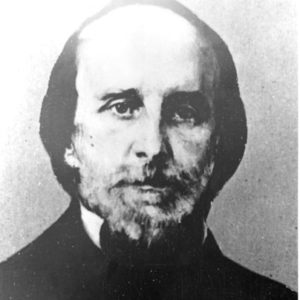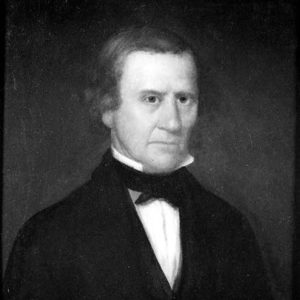calsfoundation@cals.org
Ozark Institute [School]
The Ozark Institute was built in 1845 upon the ashes of the Far West Seminary in Mount Comfort (Washington County) and provided education to students for the next quarter century.
Cephas Washburn organized the Far West Seminary, and the state chartered it in late 1844. William D. Cunningham contracted to build a brick school building on land donated from the farm of Solomon Tuttle; however, the building was gutted by fire in February 1845, just before the seminary was to open for classes. The Reverend Robert Mecklin, who served on the seminary’s board of visitors, bought out Washburn’s interest after the fire. Rather than pursue a college-level school, he founded the Ozark Institute as a school for boys, a counterpart to the Fayetteville Female Seminary in nearby Fayetteville (Washington County). The main building of the institute was rebuilt within the seminary’s old brick building. It comprised two stories with more than 3,200 square feet of space spread among four rooms and a wide hall running the length of the building.
In 1848, tuition for the year was $24, according to a notice published in the Arkansas State Democrat, and room and board could be found with “respectable” families near the school for $1.25 per week. By the mid-1850s, tuition varied from $8 to $15 per term depending on the class entered.
In 1849, the Ozark Institute enrolled sixty students for the year. Perhaps as a result of his continued success, Mecklin helped Anne James establish a companion school for girls, but it lasted barely a year after James married and left Washington County.
Faculty in the early years included A. S. Lockert, who taught Latin and Greek; Peter Van Hoose, who taught mathematics; and Mecklin, the principal. Over the years, other notable educators taught at the Ozark Institute, including Cephas Washburn, Isaac Murphy, David McMannus, and Robert Graham, who split away from Mecklin’s institute in late 1850 to start Arkansas College in Fayetteville.
Families from northwestern Arkansas and the Cherokee Nation sent their sons to the Ozark Institute for instruction. Among its alumni were John Rollin Ridge, believed to be the first Native American to publish a novel; James H. Van Hoose, later a mayor of Fayetteville; Edward Payson Washbourne, the artist who painted The Arkansas Traveler; and John Lynch Adair, later the editor of the Cherokee Advocate.
During the winter of 1861–62, Confederate troops set up camp on the campus of the Ozark Institute, where a hospital was established in the main brick building. Among the early casualties were former students of the institute, including William Brown, Henry Fullbright, and (James or Martin) Hawkins, all of whom died at the Battle of Wilson’s Creek in Missouri.
Unlike the educational institutions of Fayetteville, the main brick building of the Ozark Institute survived the Civil War, as did the Mecklins’ home on the campus. Mecklin did not return to teaching after the war, but the school reopened by 1868. Charles H. Leverett was hired as principal. Mecklin died in 1871, and Leverett left the school in 1872 to become a professor at the newly opened Arkansas Industrial University (now the University of Arkansas) in Fayetteville. The Ozark Institute closed soon afterward.
A few foundation stones and a stone marker erected in 1934, just west of the clubhouse of the Razorback Golf Course at the corner of Deane Solomon Road and Lori Drive, are all that remain of the Ozark Institute.
For additional information:
Carter, Dean G. “Some Historical Notes on Far West Seminary.” Arkansas Historical Quarterly 29 (Winter 1970): 345–360.
History of Washington County, Arkansas. Springdale: Shiloh Museum, 1989.
Lemke, W. J. Early Colleges and Academies of Washington County, Arkansas. Fayetteville, AR: Washington County Historical Society, 1954.
Charlie Alison
University of Arkansas, Fayetteville
 Isaac Murphy
Isaac Murphy  Edward Payson Washbourne
Edward Payson Washbourne  Cephas Washburn
Cephas Washburn 




Comments
No comments on this entry yet.